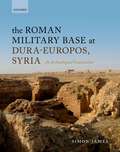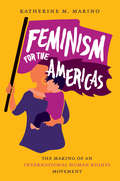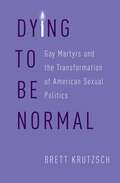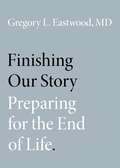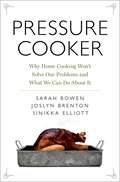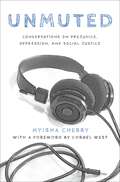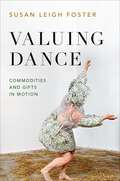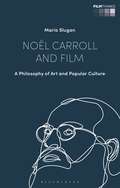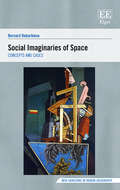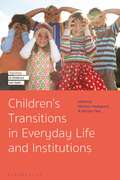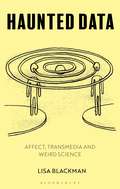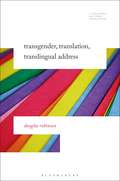- Table View
- List View
The Roman Military Base at Dura-Europos, Syria: An Archaeological Visualization
by Simon JamesDura-Europos, a Parthian-ruled Greco-Syrian city, was captured by Rome c.AD165. It then accommodated a Roman garrison until its destruction by Sasanian siege c.AD256. Excavations of the site between the World Wars made sensational discoveries, and with renewed exploration from 1986 to 2011, Dura remains the best-explored city of the Roman East. A critical revelation was a sprawling Roman military base occupying a quarter of the city's interior. This included swathes of civilian housing converted to soldiers' accommodation and several existing sanctuaries, as well as baths, an amphitheatre, headquarters, and more temples added by the garrison. Base and garrison were clearly fundamental factors in the history of Roman Dura, but what impact did they have on the civil population? Original excavators gloomily portrayed Durenes evicted from their homes and holy places, and subjected to extortion and impoverishment by brutal soldiers, while recent commentators have envisaged military-civilian concordia, with shared prosperity and integration. Detailed examination of the evidence presents a new picture. Through the use of GPS, satellite, geophysical and archival evidence, this volume shows that the Roman military base and resident community were even bigger than previously understood, with both military and civil communities appearing much more internally complex than has been allowed until now. The result is a fascinating social dynamic which we can partly reconstruct, giving us a nuanced picture of life in a city near the eastern frontier of the Roman world.
Slave No More: Self-Liberation before Abolitionism in the Americas
by Aline HelgCommanding a vast historiography of slavery and emancipation, Aline Helg reveals as never before how significant numbers of enslaved Africans across the entire Western Hemisphere managed to free themselves hundreds of years before the formation of white-run abolitionist movements. Her sweeping view of resistance and struggle covers more than three centuries, from early colonization to the American and Haitian revolutions, Spanish American independence, and abolition in the British Caribbean. Helg not only underscores the agency of those who managed to become "free people of color" before abolitionism took hold but also assesses in detail the specific strategies they created and utilized.While recognizing the powerful forces supporting slavery, Helg articulates four primary liberation strategies: flight and marronage; manumission by legal document; military service, for men, in exchange for promised emancipation; and revolt—along with a willingness to exploit any weakness in the domination system. Helg looks at such actions at both individual and community levels and in the context of national and international political movements. Bringing together the broad currents of liberal abolitionism with an original analysis of forms of manumission and marronage, Slave No More deepens our understanding of how enslaved men, women, and even children contributed to the slow demise of slavery.
Taste, Politics, and Identities in Mexican Food
by Steffan Igor Ayora-DiazThis book examines the history, archaeology, and anthropology of Mexican taste. Contributors analyze how the contemporary identity of Mexican food has been created and formed through concepts of taste, and how this national identity is adapted and moulded through change and migration. Drawing on case studies with a focus on Mexico, but also including Israel and the United States, the contributors examine how local and national identities; the global market of gastronomic tourism; and historic transformations in trade, production, the kitchen space, and appliances; shape the taste of Mexican food and drink. Chapters include an exploration of the popularity of Mexican beer in the United States by Jeffrey Pilcher, an examination of the experience of eating chapulines in Oaxaca by Paulette Schuster and Jeffrey H. Cohen, an investigation into transformations of contemporary Yucatecan gastronomy by Steffan Igor Ayora-Diaz, and an afterword from Richard Wilk. Together, the contributors demonstrate how taste itself is shaped through a history of social and cultural practices. In addition, they look at how culinary and gastronomic experience is tied to issues of identity politics, as well as to the global expansion of local cuisines.
What are Exhibitions for? An Anthropological Approach
by Inge DanielsWhy do people go to exhibitions, and what do they hope to gain from the experience? What would happen if people were encouraged to move freely through exhibition spaces, take photographs and be playful?In this book, Inge Daniels explores what might happen if people and objects were freed from the regulations currently associated with going to an exhibition. Traditional understandings of exhibitions place the viewers in a one-way communication form, where the exhibition and those behind its creation inform their audiences. However, motivations behind exhibition-going are multiple and complex and frequently the intentions ofcurators do not match the expectations of their visitors.Based on an in-depth ethnographic examination of the processes involved in the making and reception of one particular exhibition-experiment as well as a study that follows 'freed' objects into their new homes, this publication will not only shed light on what exhibitions are, but also what they could become in the future.Featuring over 175 colour illustrations and using practical examples, this is an important contribution for students and scholars of anthropology, museum studies, photography, design and architecture.
Feminism for the Americas: The Making of an International Human Rights Movement (Gender and American Culture)
by Katherine M. MarinoThis book chronicles the dawn of the global movement for women's rights in the first decades of the twentieth century. The founding mothers of this movement were not based primarily in the United States, however, or in Europe. Instead, Katherine M. Marino introduces readers to a cast of remarkable Latin American and Caribbean women whose deep friendships and intense rivalries forged global feminism out of an era of imperialism, racism, and fascism. Six dynamic activists form the heart of this story: from Brazil, Bertha Lutz; from Cuba, Ofelia Domingez Navarro; from Uruguay, Paulina Luisi; from Panama, Clara Gonzalez; from Chile, Marta Vergara; and from the United States, Doris Stevens. This Pan-American network drove a transnational movement that advocated women's suffrage, equal pay for equal work, maternity rights, and broader self-determination. Their painstaking efforts led to the enshrinement of women's rights in the United Nations Charter and the development of a framework for international human rights. But their work also revealed deep divides, with Latin American activists overcoming U.S. presumptions to feminist superiority. As Marino shows, these early fractures continue to influence divisions among today's activists along class, racial, and national lines. Marino's multinational and multilingual research yields a new narrative for the creation of global feminism. The leading women introduced here were forerunners in understanding the power relations at the heart of international affairs. Their drive to enshrine fundamental rights for women, children, and all people of the world stands as a testament to what can be accomplished when global thinking meets local action.
Advocacy Practice for Social Justice
by Richard HoeferSince the publication of its first edition in 2005, Advocacy Practice for Social Justice has served as a clear, comprehensive, and practical resource for social work courses in advocacy, community practice, and macro practice. Now in its fourth edition, this text provides extensive information on the value base for advocacy; an examination of why people get involved in advocacy; and step-by-step instructions for social workers and others who want to impact laws, regulations, and policies at any level. Bearing in mind the National Association of Social Workers' Code of Ethics' requirements to advocate on behalf of vulnerable populations, readers learn that advocacy is a problem-solving technique similar to that used in social work practice of all types. The book moves through the stages of advocacy: getting involved; understanding the issue; planning; advocating through education, persuasion, and negotiation; presenting information effectively; monitoring and evaluating results; and integrating advocacy into a social worker's everyday practice. The fourth edition's inclusion of new topics and solid foundation in social work values make it a must-read as social work students and practitioners work diligently to maintain the profession's focus on successful advocacy for social justice.
Dying to Be Normal: Gay Martyrs and the Transformation of American Sexual Politics
by Brett KrutzschFinalist, Best LGBTQ Nonfiction Book, Lambda Literary Awards 2020 On October 14, 1998, five thousand people gathered on the steps of the U.S. Capitol to mourn the death of Matthew Shepard, a gay college student who had been murdered in Wyoming eight days earlier. Politicians and celebrities addressed the crowd and the televised national audience to share their grief with the country. Never before had a gay citizen's murder elicited such widespread outrage or concern from straight Americans. In Dying to Be Normal, Brett Krutzsch argues that gay activists memorialized people like Shepard as part of a political strategy to present gays as similar to the country's dominant class of white, straight Christians. Through an examination of publicly mourned gay deaths, Krutzsch counters the common perception that LGBT politics and religion have been oppositional and reveals how gay activists used religion to bolster the argument that gays are essentially the same as straights, and therefore deserving of equal rights. Krutzsch's analysis turns to the memorialization of Shepard, Harvey Milk, Tyler Clementi, Brandon Teena, and F. C. Martinez, to campaigns like the It Gets Better Project, and national tragedies like the Pulse nightclub shooting to illustrate how activists used prominent deaths to win acceptance, influence political debates over LGBT rights, and encourage assimilation. Throughout, Krutzsch shows how, in the fight for greater social inclusion, activists relied on Christian values and rhetoric to portray gays as upstanding Americans. As Krutzsch demonstrates, gay activists regularly reinforced a white Protestant vision of acceptable American citizenship that often excluded people of color, gender-variant individuals, non-Christians, and those who did not adhere to Protestant Christianity's sexual standards. The first book to detail how martyrdom has influenced national debates over LGBT rights, Dying to Be Normal establishes how religion has shaped gay assimilation in the United States and the mainstreaming of particular gays as "normal" Americans.
Finishing Our Story: Preparing for the End of Life
by Gregory L. Eastwood, MDDeath is the destiny we all share, and this will not change. Yet the way we die, which had remained the same for many generations, has changed drastically in a relatively short time for those in developed countries with access to healthcare. For generations, if people were lucky enough to reach old age, not having died in infancy or childhood, in childbirth, in war, or by accident, they would take to bed, surrounded by loved ones who cared for them, and fade into death. Most likely, they would have seen their parents and grandparents die the same way, and so this manner of dying would be familiar: it was part of the natural cycle of life. Now less than 25 per cent of Americans die at home, having reached much older ages than people would have dreamed of in past generations, often after surviving many illnesses and even diseases that would have been terminal for their grandparents. We are fortunate to live (and die) today, supported by myriad scientific, medical, and technological advancements, however we also face new problems as a result of the new way in which we die. We can no longer anticipate a peaceful waning at home with family. We know our lives will likely end in hospitals likely after we have endured grueling treatments to prolong life. We have to decide what decisions we want our loved ones, or care-givers, to make when we cannot choose for ourselves. We have to think about whether in any circumstances we would seek physician-assisted death. We know we face other questions as well, but we may not even know where to start. In the face of these decisions, we can feel daunted and afraid. The best remedy is information and planning. In this book, Gregory Eastwood - a physician who has cared for dying patients, served as an ethics consultant, and taught end of life issues to medical and other health profession students - draws from his substantial experience with patients and families to provide the information that will help us think clearly about the choices and issues we will face at the end of our own lives, and when faced with the deaths of our loved ones. With sensitivity and profound insight, Eastwood guides us through all the important questions about death and dying in straightforward, clear language, enhanced by real-life stories. Throughout, he shows us how we can take ownership of the way we want to die, when we must die, and feel more in control as death approaches.
Pressure Cooker: Why Home Cooking Won't Solve Our Problems and What We Can Do About It
by Sarah Bowen Joslyn Brenton Sinikka ElliottFood is at the center of national debates about how Americans live and the future of the planet. Not everyone agrees about how to reform our relationship to food, but one suggestion rises above the din: We need to get back in the kitchen. Amid concerns about rising rates of obesity and diabetes, unpronounceable ingredients, and the environmental footprint of industrial agriculture, food reformers implore parents to slow down, cook from scratch, and gather around the dinner table. Making food a priority, they argue, will lead to happier and healthier families. But is it really that simple? In this riveting and beautifully-written book, Sarah Bowen, Joslyn Brenton, and Sinikka Elliott take us into the kitchens of nine women to tell the complicated story of what it takes to feed a family today. All of these mothers love their children and want them to eat well. But their kitchens are not equal. From cockroach infestations and stretched budgets to picky eaters and conflicting nutrition advice, Pressure Cooker exposes how modern families struggle to confront high expectations and deep-seated inequalities around getting food on the table. Based on extensive interviews and field research in the homes and kitchens of a diverse group of American families, Pressure Cooker challenges the logic of the most popular foodie mantras of our time, showing how they miss the mark and up the ante for parents and children. Romantic images of family meals are inviting, but they create a fiction that does little to fix the problems with the food system. The unforgettable stories in this book evocatively illustrate how class inequality, racism, sexism, and xenophobia converge at the dinner table. If we want a food system that is fair, equitable, and nourishing, we must look outside the kitchen for answers.
Unmuted: Conversations on Prejudice, Oppression, and Social Justice
by Myisha CherryWhy do people hate one another? Who gets to speak for whom? Why do so many people combat prejudice based on their race, sexual orientation, or disability? What does segregation look like today? Many of us ponder and discuss urgent questions such as these at home, and see them debated in the media, the classroom, and our social media feeds, but many of us don't have access to the important new ways philosophers are thinking about these very issues. Enter UnMute, the popular podcast hosted by Myisha Cherry, which hosts a diverse group of philosophers and explores their cutting-edge work through casual conversation. This book collects 31 of Cherry's lively and timely interviews, offering an accessible resource through which to encounter some of philosophy's most socially and politically engaged, public-facing work. Its original illustrations, depicting the interview subjects up close, show just how broad a range of philosophers--black, white, and brown, male and female, queer and straight, abled and disabled--are at the center of crucial contemporary conversations. Cherry asks philosophers to talk about their ideas in ways that anyone can understand, explaining how they got interseted in philosophy, and why the questions they investigate matter urgently. Along with the interviews, the volume provides a foreword by Cornel West, a section in which all the interviewees explain how they got into philosophy, and a "Say What?" glossary defining terms that might be new to some readers. Like the podcast that inspired it, the book welcomes in those new to these philosophical questions, those captivated by questions of race, class, gender, and other issues and looking for a new lens through which to examine them, and those well-versed in public philosophy looking for a one-stop guide.
Valuing Dance: Commodities and Gifts in Motion
by Susan Leigh FosterBecause dance materializes through and for people, because we learn to dance from others and often present dance to others, the moment of its transmission is one of dance's central and defining features. Valuing Dance looks at the occasion when dancing passes from one person to another as an act of exchange, one that is redolent with symbolic meanings, including those associated with its history and all the labor that has gone into its making. It examines two ways that dance can be exchanged, as commodity and as gift, reflecting on how each establishes dance's relative worth and merit differently. When and why do we give dance? Where and to whom do we sell it? How are such acts of exchange rationalized and justified? Valuing Dance poses these questions in order to contribute to a conversation around what dance is, what it does, and why it matters.
Noël Carroll and Film: A Philosophy of Art and Popular Culture (Film Thinks)
by Mario SluganNoel Carroll is one of the most prolific, widely-cited and distinguished philosophers of art, but how, specifically, has cinema impacted his thought? This book, one of the first in the acclaimed 'Film Thinks' series, argues that Carroll's background in both cinema and philosophy has been crucial to his overall theory of aesthetics. Often a controversial figure within film studies, as someone who has assertively contested the psychoanalytic, semiotic and Marxist cornerstones of the field, his allegiance to alternative philosophical traditions has similarly polarised his readership.Mario Slugan proposes that Carroll's defence of the notions of truth and objectivity provides a welcome antidote to 'anything goes' attitudes and postmodern scepticism towards art and popular culture, including film. Carroll's thinking has loosened the grip of continental philosophers on cinema studies - from Maurice Merleau-Ponty to Gilles Deleuze and Jacques Lacan - by turning to cognitive and analytical approaches. Slugan goes further to reveal that Carroll's methods of evaluation and interpretation in fact, usefully bridge gaps between these `opposing' sides, to look at artworks anew. Throughout, Slugan revisits and enriches Carroll's definitions of popular art, mass art, horror, humour and other topics and concludes by tracing their origins to this important thinker's relationship with the medium of cinema.
Advanced Introduction to Regional Innovation Systems (Elgar Advanced Introductions series)
by Bjørn T. Asheim Arne Isaksen Michaela TripplElgar Advanced Introductions are stimulating and thoughtful introductions to major fields in the social sciences and law, expertly written by the world’s leading scholars. Designed to be accessible yet rigorous, they offer concise and lucid surveys of the substantive and policy issues associated with discrete subject areas. Over the past 25 years, the regional innovation system (RIS) approach has become a powerful framework for explaining the uneven geographical distribution of innovation, as well as for developing policies geared towards boosting the innovation capability of regional economies. This Advanced Introduction provides a critical review and discussion of research on RIS to answer a set of core questions covering the origins of the concept and its theoretical underpinnings, conceptual advances, empirical applications in different spatial contexts, the policy relevance of RIS and the challenges for future scholarly work. Key features include: • a comprehensive introduction to the RIS approach and its development • a critical review of the development of research on RIS • an analysis of empirical varieties of RIS • in-depth discussion linking RIS to other important concepts in studies of regional economic development, including industrial districts, regional clusters, knowledge bases and regional industrial path development. Ideal as an introductory textbook at both bachelor and master levels in economic geography, regional economic development and innovation studies, this concise Advanced Introduction will be a vital tool for understanding regional innovation studies.
Social Imaginaries of Space: Concepts and Cases (New Horizons in Human Geography series)
by Bernard DebarbieuxTravelling through various historical and geographical contexts, Social Imaginaries of Space explores diverse forms of spatiality, examining the interconnections which shape different social collectives. Proposing a theory on how space is intrinsically linked to the making of societies, this book examines the history of the spatiality of modern states and nations and the social collectives of Western modernity in a contemporary light. Debarbieux offers a practical exploration of his theory of the social imaginaries of space through the analysis of a number of case studies. Advanced geography scholars will find the analysis of space and its impact on societies a valuable tool in understanding the ways in which space, culture and behaviour interact. Historians of Western modernity will also benefit from Debarbieux’s analysis of case studies that impact modern life.
Talking Like Children: Language and the Production of Age in the Marshall Islands (Oxf Studies in Anthropology of Language)
by Elise BermanChildren in the Marshall Islands do many things that adults do not. They walk around half naked. They carry and eat food in public without offering it to others. They talk about things they see rather than hiding uncomfortable truths. They explicitly refuse to give. Why do they do these things? Many think these behaviors are a natural result of children's innate immaturity. But Elise Berman argues that children are actually taught to do things that adults avoid: to be rude, inappropriate, and immature. Before children learn to be adults, they learn to be different from them. Berman's main theoretical claim therefore is also a novel one: age emerges through interaction and is a social production. In Talking Like Children, Berman analyzes a variety of interactions in the Marshall Islands, all broadly based around exchange: adoption negotiations, efforts to ask for or avoid giving away food, contentious debates about supposed child abuse. In these dramas both large and small, age differences emerge through the decisions people make, the emotions they feel, and the power they gain. Berman's research includes a range of methods -- participant observation, video and audio recordings, interviews, children's drawings -- that yield a significant corpus of data including over 80 hours of recorded naturalistic social interaction. Presented as a series of captivating stories, Talking Like Children is an intimate analysis of speech and interaction that shows what age means. Like gender and race, age differences are both culturally produced and socially important. The differences between Marshallese children and adults give both groups the ability to manipulate social life in distinct but often complementary ways. These differences produce culture itself. Talking Like Children establishes age as a foundational social variable and a central concern of anthropological and linguistic research.
African Americans and the Classics: Antiquity, Abolition and Activism (Library of Classical Studies #1)
by Margaret MalamudA new wave of research in black classicism has emerged in the 21st century that explores the role played by the classics in the larger cultural traditions of black America, Africa and the Caribbean. Addressing a gap in this scholarship, Margaret Malamud investigates why and how advocates for abolition and black civil rights (both black and white) deployed their knowledge of classical literature and history in their struggle for black liberty and equality in the United States. African Americans boldly staked their own claims to the classical world: they deployed texts, ideas and images of ancient Greece, Rome and Egypt in order to establish their authority in debates about slavery, race, politics and education. A central argument of this book is that knowledge and deployment of Classics was a powerful weapon and tool for resistance-as improbable as that might seem now-when wielded by black and white activists committed to the abolition of slavery and the end of the social and economic oppression of free blacks. The book significantly expands our understanding of both black history and classical reception in the United States.
Bauhaus Bodies: Gender, Sexuality, and Body Culture in Modernism’s Legendary Art School (Visual Cultures and German Contexts)
by Elizabeth Otto Patrick RösslerA century after the Bauhaus's founding in 1919, this book reassesses it as more than a highly influential art, architecture, and design school. In myriad ways, emerging ideas about the body in relation to health, movement, gender, and sexuality were at the heart of art and life at the school. Bauhaus Bodies reassesses the work of both well-known Bauhaus members and those who have unjustifiably escaped scholarly scrutiny, its women in particular. In fourteen original, cutting-edge essays by established experts and emerging scholars, this book reveals how Bauhaus artists challenged traditional ideas about bodies and gender. Written to appeal to students, scholars, and the broad public, Bauhaus Bodies will be essential reading for anyone interested in modern art, architecture, design history, and gender studies; it will define conversations and debates during the 2019 centenary of the Bauhaus's founding and beyond.
Children's Transitions in Everyday Life and Institutions (Transitions in Childhood and Youth)
by Mariane Hedegaard Marilyn FleerWritten by a team of international contributors and featuring case studies from a range of educational settings in Australia, Denmark, Spain, Sweden, and the USA, this edited book is the first in the field of early childhood and youth studies to draw on Vygotsky's cultural-historical theory to give insights into transitions in childhood, what they are and how they are differently experienced. Transitions are explored holistically so the chapters not only focus on the person transitioning but also the institutions in which the person is transitioning from and to, with a focus on schools and daycare. The contributors look at how societal values and policies impact these transitions and comparison are drawn between international settings. The book includes chapters on expatriate families, immigrant children, home-school transitions, the role of play and communities. Through interviews, case studies and the analysis of empirical material from fieldwork, Children's Transitions in Everyday Life and Institutions reflects on the best ways to engage children so that they may emerge as competent actors in their new settings and transition well.
Haunted Data: Affect, Transmedia, Weird Science
by Lisa BlackmanHaunted Data explores the concepts that are at work in our complex relationships with data. Our engagement with data – big or small – is never as simplistic or straightforward as might first appear. Indeed, Blackman argues that our relationship with data is haunted with errors, dead ends, ghostly figures, and misunderstandings that challenge core assumptions about the nature of thought, consciousness, mind, cognition, affect, communication, control and rationality, both human and non-human.Using contemporary controversies from 'weird science' including the field of priming and its uncanny relations to animal telepathy, as well as artificial intelligences and their curious relation to psychic research ('clairvoyant computers'), Blackman shows how some of the current crises in science in these areas reveal more than scientists are willing or even able to acknowledge. In addition to proposing a new theory of how we might engage with data, Haunted Data also provides a nuanced survey of the historical context to contemporary debates, going back to the 19th Century origins of modern computation and science to explain the ubiquity and oddness of our data relations. Drawing from radical philosophies of science, feminist science studies, queer theory, cultural studies, and the field of affect studies, the book develops a manifesto for how artists, philosophers and scientists might engage creatively and critically with science within the context of digital communication.
New York New Wave: The Legacy of Feminist Art in Emerging Practice (International Library of Modern and Contemporary Art)
by Kathy BattistaNew York is a centre of creative production for an exciting, emerging generation of women artists. Their work investigates themes such as the body as medium and subject matter; the deconstruction of the existing patriarchal order of the art world; the appropriation of earlier art historical references; and the use of so-called abject and everyday materials. New York New Wave investigates the relevance of earlier feminist practice for this 'new' generation, asking: Does gender difference still play a role in today's practice? How can younger women artists embrace a radical political ideology and yet remain market friendly? How far have these artists diverged from the established feminist "tradition"? Artists discussed include: Firelei Baez, EV Day, Ruby LaToya Fraser, Diana Al-Hadid, K8 Hardy, Valerie Hegarty, Cindy Hinant, Dawn Kasper, Anya Kielar, Liz Magic Laser, Narcissister, Alix Pearlstein, Aurel Schmidt, AL Steiner and W.A.G.E.
New York New Wave: The Legacy of Feminist Art in Emerging Practice (International Library of Modern and Contemporary Art)
by Kathy BattistaNew York is a centre of creative production for an exciting, emerging generation of women artists. Their work investigates themes such as the body as medium and subject matter; the deconstruction of the existing patriarchal order of the art world; the appropriation of earlier art historical references; and the use of so-called abject and everyday materials. New York New Wave investigates the relevance of earlier feminist practice for this 'new' generation, asking: Does gender difference still play a role in today's practice? How can younger women artists embrace a radical political ideology and yet remain market friendly? How far have these artists diverged from the established feminist "tradition"? Artists discussed include: Firelei Baez, EV Day, Ruby LaToya Fraser, Diana Al-Hadid, K8 Hardy, Valerie Hegarty, Cindy Hinant, Dawn Kasper, Anya Kielar, Liz Magic Laser, Narcissister, Alix Pearlstein, Aurel Schmidt, AL Steiner and W.A.G.E.
Personifying Prehistory: Relational Ontologies in Bronze Age Britain and Ireland
by Joanna BrückThe Bronze Age is frequently framed in social evolutionary terms. Viewed as the period which saw the emergence of social differentiation, the development of long-distance trade, and the intensification of agricultural production, it is seen as the precursor and origin-point for significant aspects of the modern world. This book presents a very different image of Bronze Age Britain and Ireland. Drawing on the wealth of material from recent excavations, as well as a long history of research, it explores the impact of the post-Enlightenment 'othering' of the non-human on our understanding of Bronze Age society. There is much to suggest that the conceptual boundary between the active human subject and the passive world of objects, so familiar from our own cultural context, was not drawn in this categorical way in the Bronze Age; the self was constructed in relational rather than individualistic terms, and aspects of the non-human world such as pots, houses, and mountains were considered animate entities with their own spirit or soul. In a series of thematic chapters on the human body, artefacts, settlements, and landscapes, this book considers the character of Bronze Age personhood, the relationship between individual and society, and ideas around agency and social power. The treatment and deposition of things such as querns, axes, and human remains provides insights into the meanings and values ascribed to objects and places, and the ways in which such items acted as social agents in the Bronze Age world.
Textiles, Community and Controversy: The Knitting Map
by Jools Gilson Nicola MoffatTaking a major textile artwork, the Knitting Map, as a central case study, this book interrogates the social, philosophical and critical issues surrounding contemporary textile art today. It examines how contemporary textile artworks, and the process of making them, are laden with multiple and often contradictory meanings. Created by more than 2,500 knitters from 22 different countries, who were mostly working-class women, to the size of a tennis court, the Knitting Map became the subject of national controversy in Ireland. Exploring the creation of this multi-modal artwork as a key moment in Irish art history, Textiles, Community and Controversy puts it into the context of feminist artists such as Judy Chicago, Faith Ringold and the Guerilla Girls. Bringing together leading art critics and textile scholars, including Lucy Lippard, Jessica Hemmings and Joanne Turney, the collection explores key issues in textile practice from gender, class and nation to technology and performance.
Transgender, Translation, Translingual Address (Literatures, Cultures, Translation)
by Douglas RobinsonThe emergence of transgender communities into the public eye over the past few decades has brought some new understanding, but also renewed outbreaks of violent backlash. In Transgender, Translation, Translingual Address Douglas Robinson seeks to understand the “translational” or “translingual” dialogues between cisgendered and transgendered people. Drawing on a wide range of LGBT scholars, philosophers, sociologists, sexologists, and literary voices, Robinson sets up cis-trans dialogues on such issues as “being born in the wrong body,” binary vs. anti-binary sex/gender identities, and the nature of transition and transformation. Prominent voices in the book include Kate Bornstein, C. Jacob Hale, and Sassafras Lowrey.The theory of translation mobilized in the book is not the traditional equivalence-based one, but Callon and Latour's sociology of translation as “speaking for someone else,” which grounds the study of translation in social pressures to conform to group norms. In addition, however, Robinson translates a series of passages from Finnish trans novels into English, and explores the “translingual address” that emerges when those English translations are put into dialogue with cis and trans scholars.
Gender Identity, Sexuality and Autism: Voices from Across the Spectrum
by Eva A. Mendes Meredith R. Maroney Wenn LawsonBringing together a collection of narratives from those who are on the autism spectrum whilst also identifying as lesbian, gay, bisexual, transgender, queer, intersex and/or asexual (LGBTQIA), this book explores the intersection of the two spectrums as well as the diverse experiences that come with it.By providing knowledge and advice based on in-depth research and personal accounts, the narratives will be immensely valuable to teenagers, adults, partners and families. The authors round these stories with a discussion of themes across narratives, and implications for the issues discussed. In the final chapter, the authors reflect on commonly asked questions from a clinical perspective, bringing in relevant research, as well as sharing best-practice tips and considerations that may be helpful for LGBTQIA and ASD teenagers and adults. These may also be used by family members and clinicians when counselling teenagers and adults on the dual spectrum.With each chapter structured around LGBTQIA and autism spectrum identities, Gender Identity, Sexuality and Autism highlights the fluidity of gender identity, sexual orientation and neurodiversity and provides a space for people to share their individual experiences.
